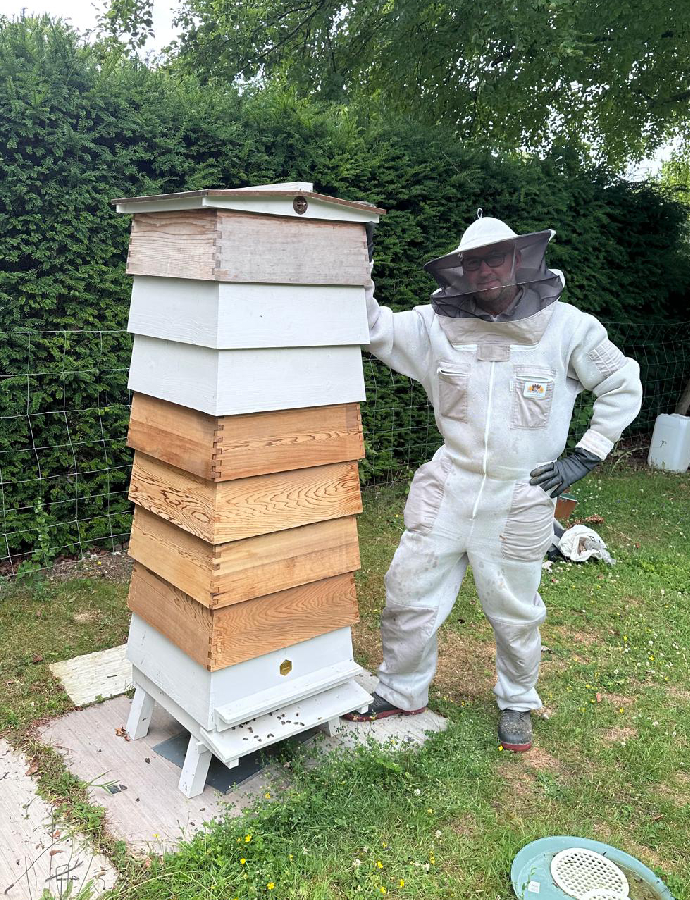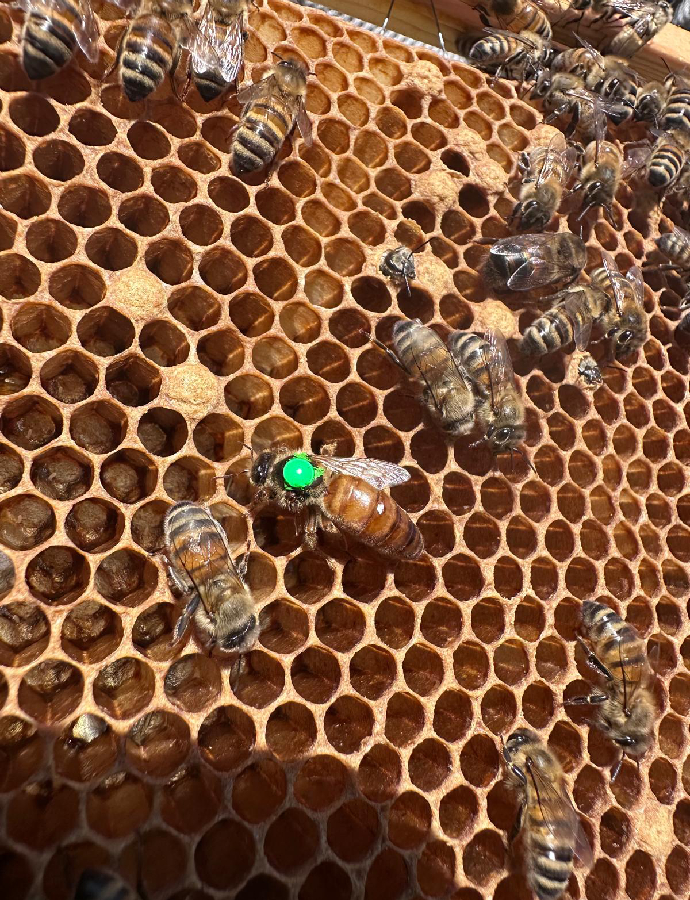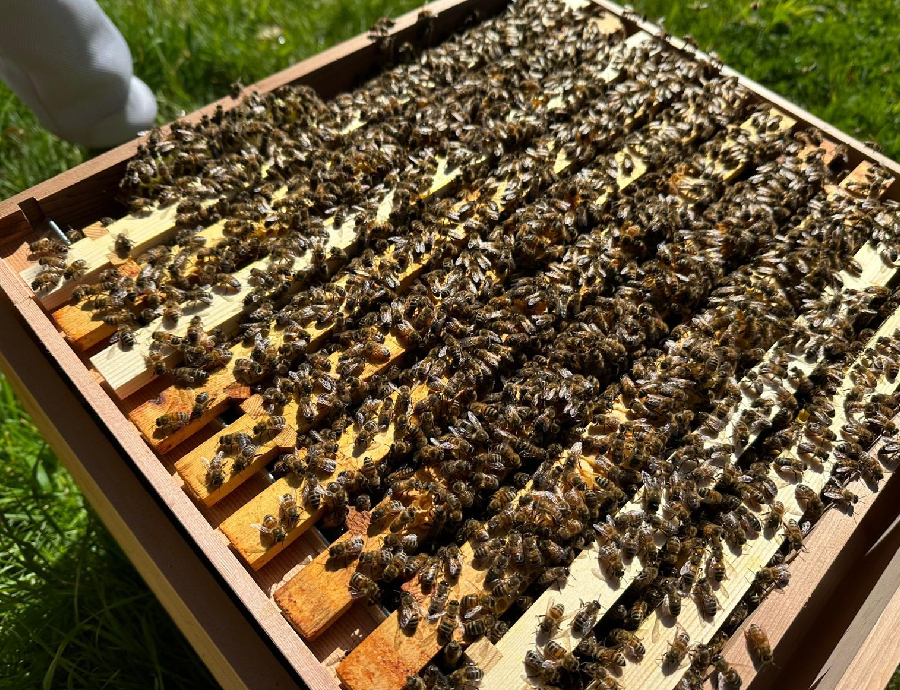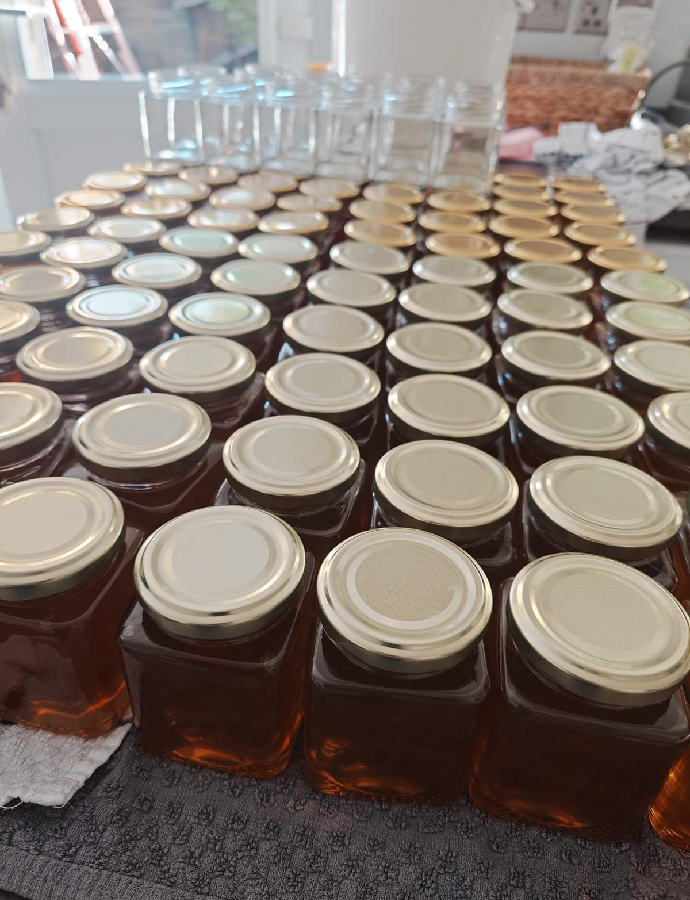Newsletter Sign Up
Sign up for the latest updates on what’s happening at Whiteley. What’s on, offers and what’s new, hear it here first.



The Whiteley Bees
Whiteley is delighted to partner with The Nectar Seeker to sponsor a local community beehive!

A Year in the Hive
We began the season with our colony in a horizontal long hive, which allows for gentle management but can limit space during rapid spring growth. As the bees became honey bound — filling the brood nest with nectar and restricting the queen — we transferred them into a vertical Abelo poly hive. With better insulation and expandable space, the queen resumed laying, and the colony thrived.
We soon added honey supers above a queen excluder to keep brood out of the honey. The bees foraged local wildflowers, dried the nectar, and capped the frames — resulting in a rich, local honey harvest.

Growing the Operation
With the hive booming, we initiated a controlled split — moving frames of brood, honey, and nurse bees into a smaller NUC hive. A newly mated Buckfast queen was introduced via a fondant plug. By next spring, we expect 2–3 new colonies, all descended from the Whiteley hive — building a small “bee village” to boost productivity and sustainability.

We faced two major hurdles:
- Supersedure Cells: Despite a healthy queen, the colony began building replacement cells. To avoid instability or cast swarms, we removed them.
- Wasp Attacks: Summer dryness drew wasps to the apiary. We defended the hive by reducing entrance size, placing baited traps, and monitoring food stores. The colony remained strong.
Weekly Inspections
From April to August, we conduct weekly checks on all hives — inspecting for disease, brood health, queen presence, food levels, and potential swarming. These are vital to maintaining healthy colonies.

Preparing for Winter
As the season shifts, we focus on winter prep: treating for Varroa mites, checking for disease, ensuring each hive has 18–25 kg of honey, and evaluating queen strength. A healthy winter cluster means a strong spring return.

Bee-lieve It or Not!
- Summer bees live 4–6 weeks; winter bees up to 6 months
- One jar of honey = 2 million flowers and 50,000 miles
- Queens can mate with 20 drones and live for years
- Bees keep brood at 34–35°C year-round
- Bees have five eyes and can navigate using the sun

Follow the Buzz
For more updates, join us on Instagram: @thenectarseeker. Your support helps the Whiteley hive grow into a thriving colony cluster — and we can’t wait to share what’s next.

Last updated Thursday 24 July, 2025
Share

Bottle Tops to Benches

Whiteley Book Swap

Autism Friendly Sessions

 Facebook
Facebook Email
Email